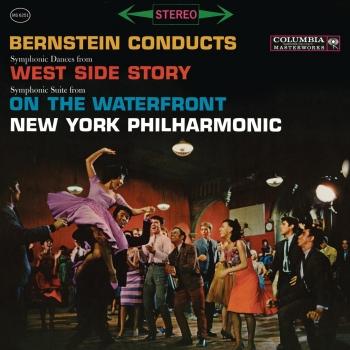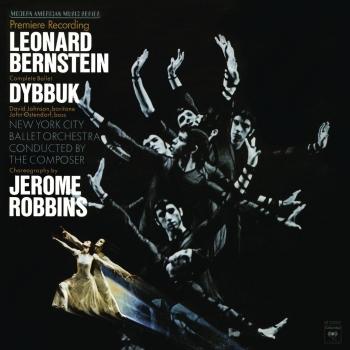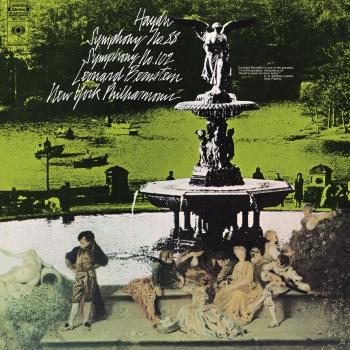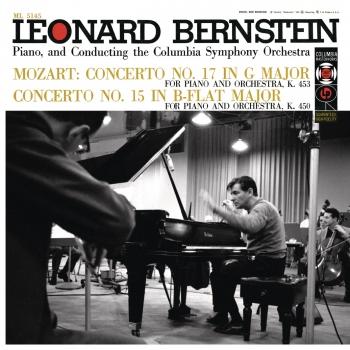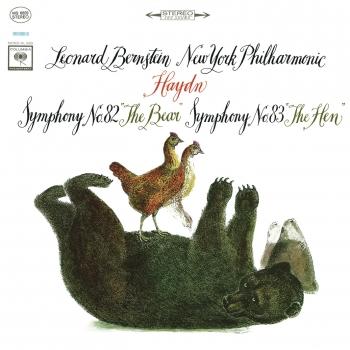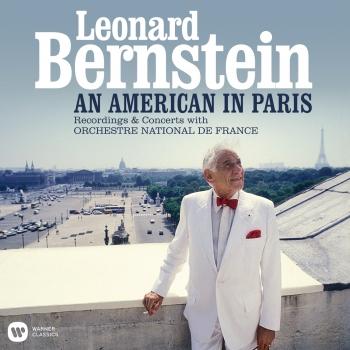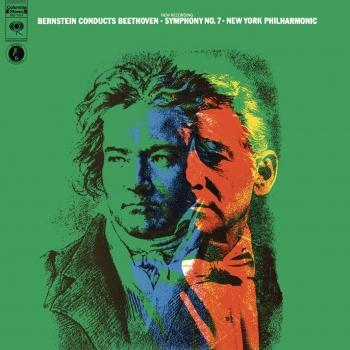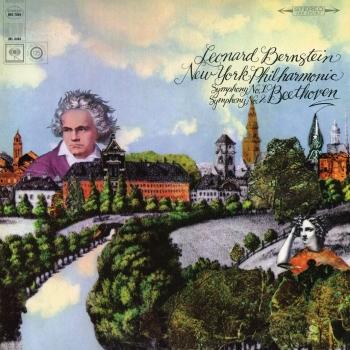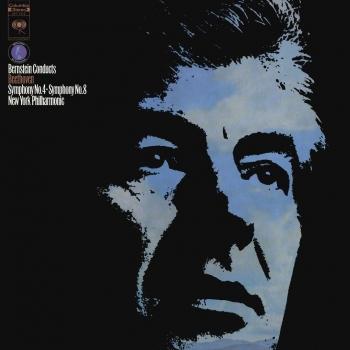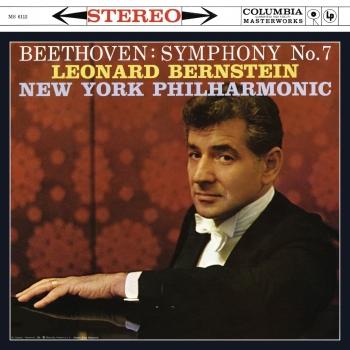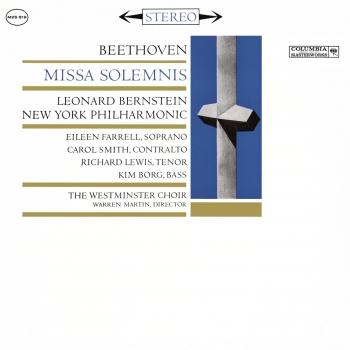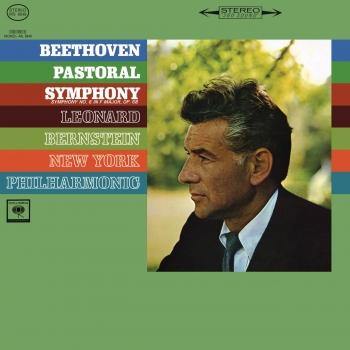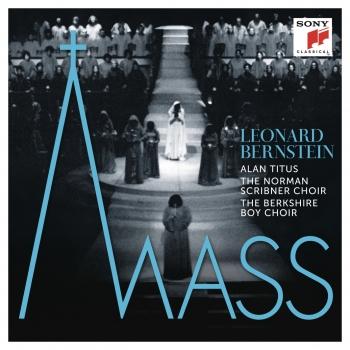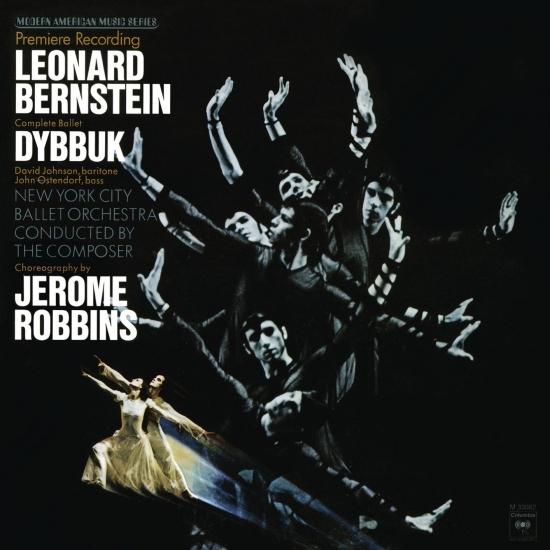
Bernstein: Dybbuk - The Complete Ballet (Remastered) Leonard Bernstein
Album info
Album-Release:
1974
HRA-Release:
09.03.2017
Album including Album cover
I`m sorry!
Dear HIGHRESAUDIO Visitor,
due to territorial constraints and also different releases dates in each country you currently can`t purchase this album. We are updating our release dates twice a week. So, please feel free to check from time-to-time, if the album is available for your country.
We suggest, that you bookmark the album and use our Short List function.
Thank you for your understanding and patience.
Yours sincerely, HIGHRESAUDIO
- Leonard Bernstein (1918-1990): Dybbuk - Complete Ballet: Part I:
- 1The Community04:48
- 2The Fathers03:55
- 3Witnesses of Birth02:11
- 4The Childrein05:06
- Part II:
- 5Kabbalah: Six Variations10:54
- Part III:
- 6Witnesses of Death01:37
- 7Leah03:00
- 8Possession08:10
- 9Exorcism03:14
- 10The Community05:14
Info for Bernstein: Dybbuk - The Complete Ballet (Remastered)
„Dybbuk“ is a ballet made by New York City Ballet ballet master Jerome Robbins to Leonard Bernstein's eponymous music and taking S. Ansky's play The Dybbuk as a source. The premiere took place on 16 May 1974, at New York State Theater, Lincoln Center, with scenery by Rouben Ter-Arutunian, costumes by Patricia Zipprodt and lighting by Jennifer Tipton. A revision of the choreography and the score was made later the same year, the ballet was renamed Dybbuk Variations and received its premiere in November.
Leonard Bernstein and Jerome Robbins first began talking about creating a ballet based on S. Ansky's play, "The Dybbuk", after they had just completed their first collaboration, Fancy Free, in 1944. Though the idea was never abandoned, other projects, including West Side Story, always seemed to intervene.
S. Ansky was the pseudonym of Solomon Zainwill Rapaport, author and folklorist (1863-1920) who was born in Chashnik, White Russia 1863. He worked as a blacksmith, bookbinder, factory hand, and teacher, and from 1911 to 1914 he traveled through the villages of several countries as head of the Jewish ethnographic expedition collecting material on folk legends, hasidic tales, and stories about Jewish poverty. It was during these trips that Ansky learned about the dybbuk.
In Jewish folklore, a dybbuk is a wandering soul which enters into a living person and talks through his mouth, presenting a separate and alien personality. The story of Ansky's play is about two young lovers secretly pledged to each other before birth by the oath of their fathers. The pledge is broken by the girl's father, who betroths her to another, so the boy, in despair, dabbles in black arts. To his misfortune, he is successful and becomes a dybbuk which enters the body of his beloved.
Ansky's play, which has become an international classic, was first produced in Yiddish by the Vilna troupe in 1920 and then, in the Hebrew translation of Bialik, by the Habimah company in Moscow, Tel Aviv, and New York. Productions followed in German, English, Polish, Ukranian, Swedish, Bulgarian and French.
The play has inspired various artistic and musical treatments of the legend. Among them was an unusual adaptation by French novelist Romain Gary, "La Danse de Gengis Cohn" in 1967, a bitter satire that tells how the spirit of a Jewish entertainer haunts the ex-Nazi who murdered him in World War II. An Italian opera "Il Dibuk" with music by Lodovico Rocca and Libretto by Renato Simoni, had its premiere at La Scala, Milan in 1934. And in the United States, another opera also titled "The Dybbuk" was written by two brothers from Oregon, Alex and David Tamkin, and produced by the New York City Opera in 1951. There was a ballet by Max Ettinger in 1947 and another opera in 1962 by Michael Whyte. Two films were made, the first a Yiddish one in Poland in 1938 and then a Hebrew version in Israel in 1968. Still another offspring of Ansky's work was Paddy Chayefsky's play "The Tenth Man" which opened in 1959 and had 623 performances at the Booth Theater.
David Johnson, baritone
John Ostendorf, bass
New York City Ballet OrchestraJerome Robbins, conductor
Digitally remastered
 Leonard Bernstein
Leonard Bernstein
was born in Lawrence, Massachusetts. He took piano lessons as a boy and attended the Garrison and Boston Latin Schools. At Harvard University, he studied with Walter Piston, Edward Burlingame-Hill, and A. Tillman Merritt, among others. Before graduating in 1939, he made an unofficial conducting debut with his own incidental music to 'The Birds,' and directed and performed in Marc Blitzstein's 'The Cradle Will Rock.' Then at the Curtis Institute of Music in Philadelphia, he studied piano with Isabella Vengerova, conducting with Fritz Reiner, and orchestration with Randall Thompson.
In 1940, he studied at the Boston Symphony Orchestra's newly created summer institute, Tanglewood, with the orchestra's conductor, Serge Koussevitzky. Bernstein later became Koussevitzky's conducting assistant.
Bernstein was appointed to his first permanent conducting post in 1943, as Assistant Conductor of the New York Philharmonic. On November 14, 1943, Bernstein substituted on a few hours notice for the ailing Bruno Walter at a Carnegie Hall concert, which was broadcast nationally on radio, receiving critical acclaim. Soon orchestras worldwide sought him out as a guest conductor.
In 1945 he was appointed Music Director of the New York City Symphony Orchestra, a post he held until 1947. After Serge Koussevitzky died in 1951, Bernstein headed the orchestral and conducting departments at Tanglewood, teaching there for many years. In 1951 he married the Chilean actress and pianist, Felicia Montealegre. He was also visiting music professor, and head of the Creative Arts Festivals at Brandeis University in the early 1950s.
Bernstein became Music Director of the New York Philharmonic in 1958. From then until 1969 he led more concerts with the orchestra than any previous conductor. He subsequently held the lifetime title of Laureate Conductor, making frequent guest appearances with the orchestra. More than half of Bernstein's 400-plus recordings were made with the New York Philharmonic.
Bernstein traveled the world as a conductor. Immediately after World War II, in 1946, he conducted in London and at the International Music Festival in Prague. In 1947 he conducted in Tel Aviv, beginning a relationship with Israel that lasted until his death. In 1953, Bernstein was the first American to conduct opera at the Teatro alla Scala in Milan: Cherubini's 'Medea' with Maria Callas.
Bernstein was a leading advocate of American composers, particularly Aaron Copland. The two remained close friends for life. As a young pianist, Bernstein performed Copland's 'Piano Variations' so often he considered the composition his trademark. Bernstein programmed and recorded nearly all of the Copland orchestral works --many of them twice. He devoted several televised 'Young People's Concerts' to Copland, and gave the premiere of Copland's 'Connotations,' commissioned for the opening of Philharmonic Hall (now Avery Fisher Hall) at Lincoln Center in 1962.
While Bernstein's conducting repertoire encompassed the standard literature, he may be best remembered for his performances and recordings of Haydn, Beethoven, Brahms, Schumann, Sibelius and Mahler. Particularly notable were his performances of the Mahler symphonies with the New York Philharmonic in the 1960s, sparking a renewed interest in the works of Mahler. Visit: www.leonardbernstein.com
This album contains no booklet.













